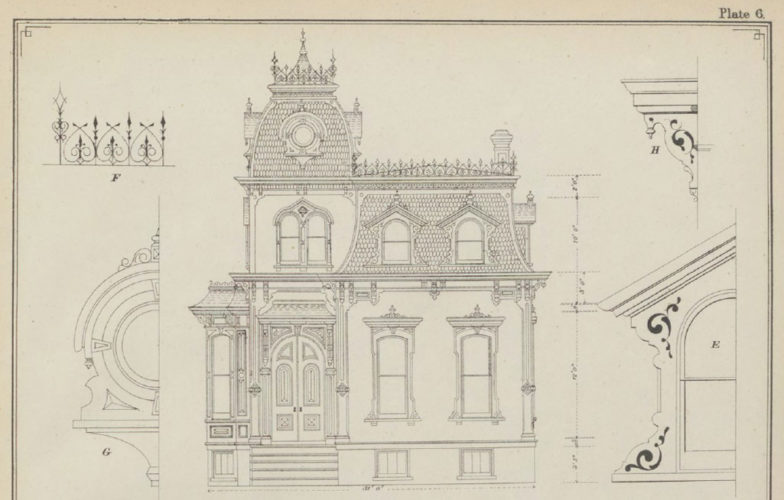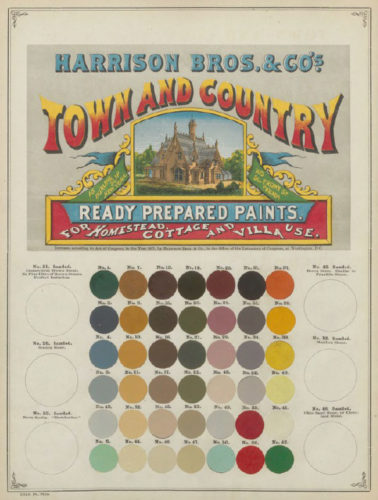Pattern Book Houses: Designing the American Dream

Books on architecture and home design have existed since the Roman Empire, when an engineer named Vitruvius documented and published acceptable building methods and styles. In the sixteenth century, an Italian architect named Andrea Palladio published a series of books that included designs for houses and architectural embellishments. His classically-inspired designs swept across Europe and even made their way to the New World, where they eventually influenced Thomas Jefferson as he designed his home, Monticello.

Asher Benjamin’s Country Builder’s Assistant, published in 1797, was the first house design book written and published in America. Known as a “builder’s manual,” it was aimed at skilled carpenters rather than the general public. Nearly fifty years later, Andrew Jackson Downing was the first to publish a book aimed at clients (provided by a growing middle class that could afford single-family homes) in addition to carpenters. This format, which became known as a “pattern book,” also tried to inspire and educate clients about style as well as functionality.
Pattern books began to grow in popularity in the 1840s and eventually overtook builder’s manuals. The books also became more lavishly illustrated as seen in the examples accompanying this post, and often included multiple elevations, architectural details, and sometimes even landscaping suggestions.
As architecture evolved from a craft into an organized, licensed profession in the second half of the nineteenth century, the publication and sale of pattern books not only generated income, but also served as advertisements for the architects that produced them. The books generally didn’t include precise schematics, but did provide enough information to estimate construction costs. Skilled builders could adapt the plans by changing dimensions and adding or removing components.

Amos Jackson Bicknell published his first pattern book, Bicknell’s Village Builder, in 1870. He was not an architect or a builder, so he included designs by architects from various parts of the country in his books, giving them national exposure. True to its title, his Village Builder not only included home plans, but also included designs for stables, churches, schools, and shops. The second edition was offered with a supplement; for an extra two dollars, buyers received eighteen additional home designs as well as a sample building contract. You can view the State Library of Ohio’s copy of the Supplement to Bicknell’s Village Builder here on Ohio Memory.
Pattern books lost popularity after World War II with the emergence of more standardized, mass-produced neighborhoods where developers had primary control over what the houses would look like. However, their influence remains. Pattern books made architectural designs available to the middle class that had previously only been available to the wealthy. Their widespread use influenced home designs throughout the country, but still left room for builders to adapt those designs to local tastes and functional requirements. In fact, interest in historic pattern books is once again growing as people use them to restore old homes or to build new homes that fit into older neighborhoods.
Thank you to Stephanie Michaels, Research and Catalog Services Librarian at theState Library of Ohio, for this week’s post!



Leave a Reply
You must be logged in to post a comment.